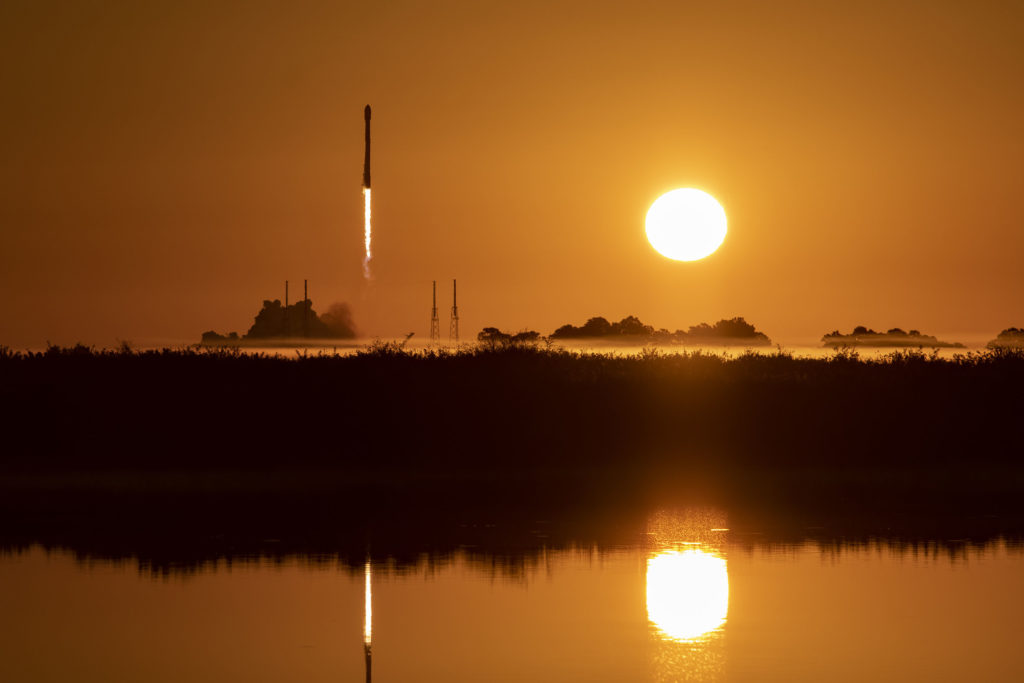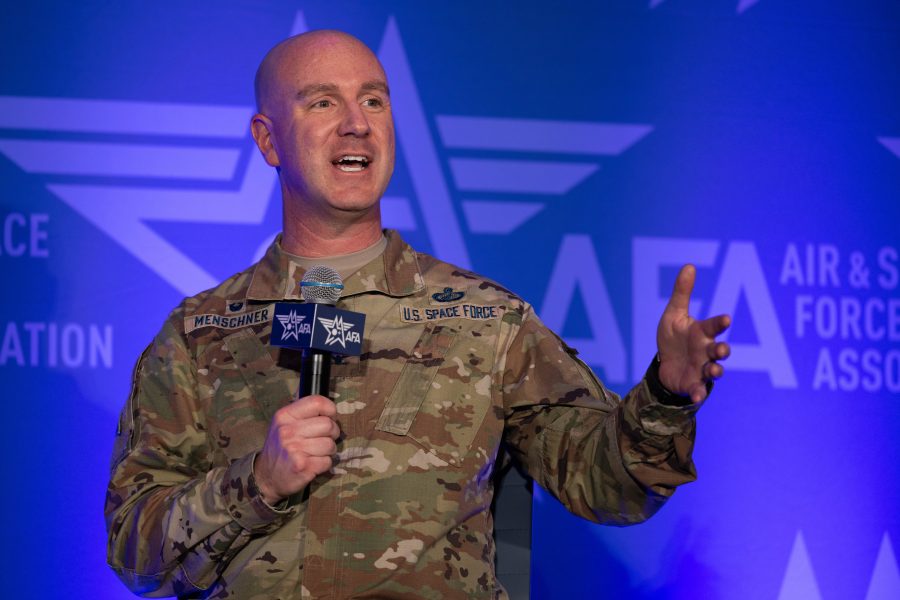AURORA, Colo.—About five months after the Space Force stood up two Integrated Mission Deltas (IMDs) to bridge the gap between operations, development, and sustainment specialists, the commanders of those Deltas say the shift has been a success, allowing their troops to keep much closer pace with technological changes, a decisive factor in the space domain.
“The ability to combine those units under a single umbrella, to be able to focus on unified mission readiness, has paid some tremendous benefits to this point,” Col. Andrew Menschner, commander of the Position, Navigation, and Timing Delta (Provisional) said Feb. 13 at the AFA Warfare Symposium.
“Now as the single commander responsible for near-term acquisition and operations, I can set the team’s priorities so that they have a focus on delivering the next generation of capabilities.”
The initial experiments have gone so well that the Space Force is evaluating which of its Deltas to try integrating next.
“I think if I were to ask all the Delta commanders in the room who wants to go next, probably all the hands would go up,” said Col. Carl Bottolfson, director of the Futures & Integration Directorate at Space Force headquarters. “This is something that the community is fully embracing.”

Unity of Command
When Chief of Space Operations Gen. B. Chance Saltzman first unveiled the IMD concept in September, he sold it as a way to cut down on organizational seams. Operators in the space, cyber, and intelligence fields typically fall under Space Operations Command (SpOC), while engineers and program managers fall under Space Systems Command (SSC). That separation can slow the rate at which operators provide feedback to developers and vice versa in order to maintain and improve systems, but IMDs bring those career fields together under one command team.
“The point is giving the commander or the command team in particular all of the levers of readiness that he or she or that team needs to prepare their forces for combat,” Bottolfson explained. “The big goal here of course is to be able to better achieve space superiority and provide those effects to the joint warfighter.”
Speed is everything in the space domain, said Col. Nicole Petrucci, commander of Space Delta 3.
“The nation that can cycle technology into military advantage faster will win,” she said at the AFA Warfare Symposium. “That’s period dot, that’s how it goes.”
The two integrated mission deltas cover electromagnetic warfare (EW) and position, navigation, and timing (PNT). The EW integrated mission delta is not a new unit. Instead, the EW sustainment offices that currently reside in SSC were realigned to Space Delta 3, the current operational EW Space Delta overseen by SpOC.
Petrucci said the day-to-day of life at Space Delta 3 was largely unchanged save for the addition of a sustainment team for one weapons system and the official adoption of an intelligence detachment. More sustainment support is on its way, but it’s already made an impact.
“It allows us to take those minor advantages and turn them into major advantages,” she said. “Because we own sustainment, we can say ‘hey, these are things we want to do with the system, these are the things we need to stay relevant, this is how we’re going to keep that military advantage.’”
Meanwhile, the PNT integrated mission delta is entirely new. Those operators used to share Space Delta 8 with satellite communications operators, but under the new system, PNT operators have their own Delta and work alongside PNT sustainers. At a major test readiness event for a next-generation operational control system, the PNT Delta could for the first time have operators come in to give feedback on whether the system was ready for the next round of testing, Menschner said.
An acquisitions officer for most of his career, the colonel used to hear plenty of references to “the operator perspective” in meetings, but rarely was there an actual operator in the room. The IMDs fix that problem and shave months off the process for testing new systems and training operators on them.
“The fact that we’re able to get operators hands on a system before it formally comes to them has paid tremendous benefits,” he told Air & Space Forces Magazine.
The Delta’s new scope of responsibilities—from launching GPS III satellites to testing, operating, and sustaining them and the ground systems—seems to have energized its members, Menscher noted.
“It’s been great for our [company grade officers] and young enlisted to see a broad spectrum of opportunities out there that they might be able to see themselves working long-term in,” he said. “I predict it’ll be a great thing for retention.”

Future Moves
Though the Space Force is considering integrating future Deltas, the exact nature of that integration may vary.
“I hear, ‘That worked for PNT and EW, but that’s never going to work for my mission area,’” Menscher said. “It’s going to look different in your mission area, but that’s the flexibility built into the IMD construct … you can make the right decision for your mission area.”
Even at the PNT and EW deltas, there are still kinks to work out. One challenge is nailing down exactly when a new system transfers from the “system deltas,” which Saltzman announced a month after revealing the IMDs.
Like the IMDs, the new system deltas combine personnel from different areas and are paired to mission areas such as PNT and EW. The system deltas fall under Space Systems Command, where they focus more on the early side of the acquisition cycle before transferring a new system to the IMDs, where the focus is on “we have metal being bent and we’re trying to get it to the field faster,” Bottolfson explained. But the exact time when the transfer occurs is uncertain.
“Instead of a hand-off, it’s more of a handshake,” the colonel said.
Still, the first two IMDs prove “this is a worthwhile concept and that we want to scale this to the rest of the force,” he added.
When will that scaling up occur? “Soon,” he said.
